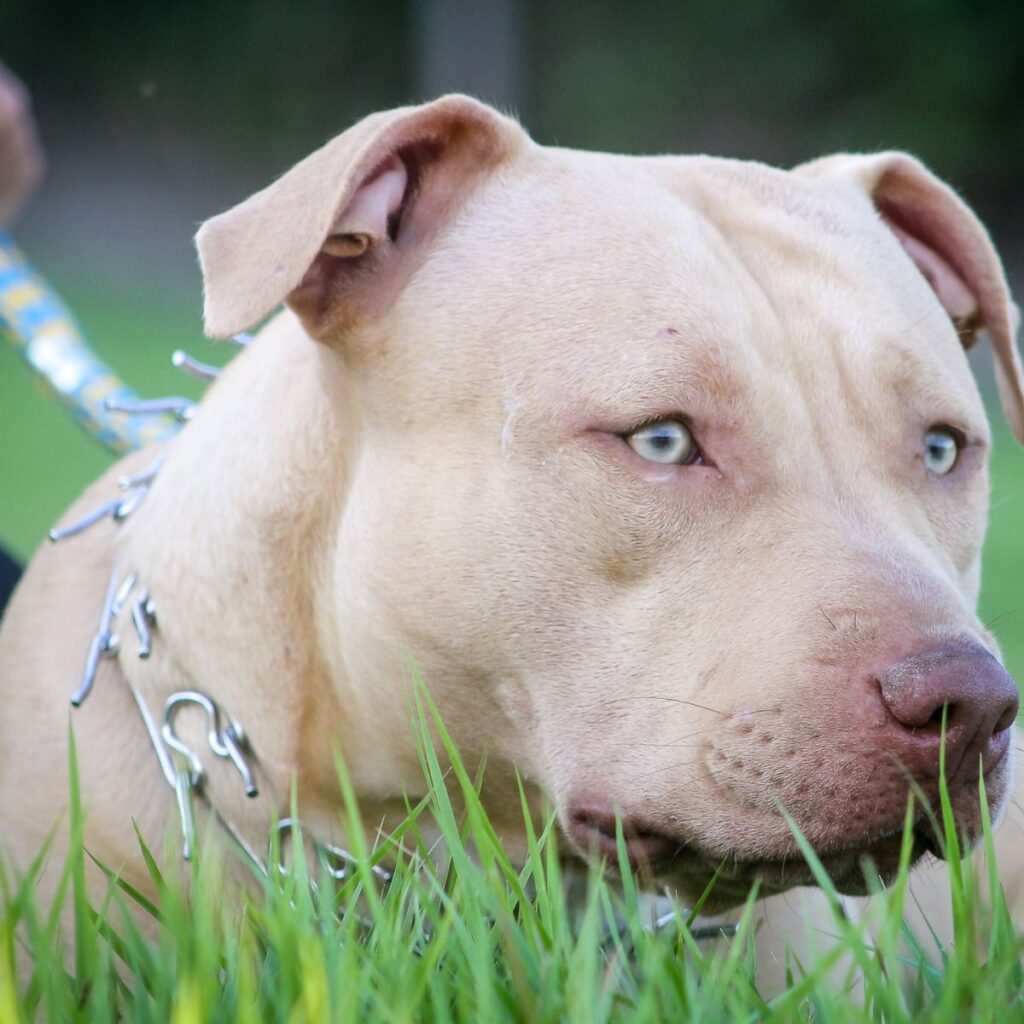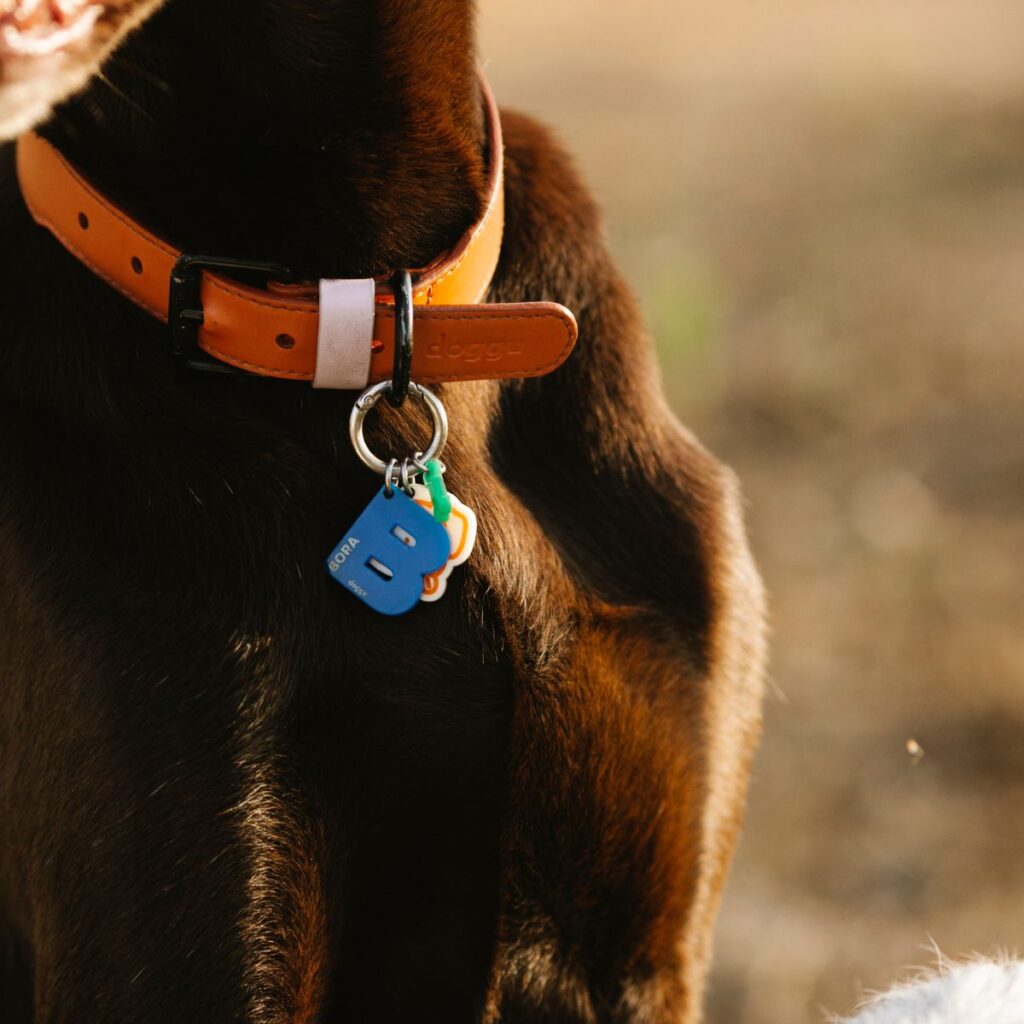While it may seem uncommon, dogs can indeed develop allergies to collars.
Dog collars are typically made from various materials, such as nylon, leather, or synthetic fabrics, and may contain dyes, metals, or other additives.
These components can trigger allergic reactions in some dogs, leading to discomfort, itching, redness, or even more severe skin issues.
Identifying and addressing collar-related allergies is crucial for ensuring your canine companion’s comfort and well-being.
Understanding the signs of a possible allergic reaction and choosing collars made from hypoallergenic materials can play a pivotal role in preventing discomfort for your furry friend.
What is Collar Allergies?
Collar allergies, a relatively lesser-known concern among dog owners, refer to allergic reactions that dogs may develop in response to the materials used in their collars.
These reactions manifest as skin irritations, redness, itching, or more severe dermatological issues around the neck area.
While collars are commonly perceived as harmless accessories, the various materials, dyes, and metals they contain can trigger sensitivities in some dogs, leading to discomfort and health issues.
Understanding collar allergies is essential for pet owners to address these concerns promptly and ensure their furry companions remain free from unnecessary pain.
Symptoms of Collar Allergies in Dogs

Recognizing the symptoms of collar allergies in dogs is crucial for pet owners to address potential health concerns promptly.
These allergic reactions can manifest in various ways, indicating that the collar or its components may be causing discomfort for our furry companions.
Persistent Itching:
Dogs experiencing collar allergies exhibit persistent itching around the neck area. Observing your dog scratching or pawing at their collar more frequently than usual may indicate skin irritation.
Redness and Inflammation:
Allergic reactions can lead to redness and inflammation of the skin. If you notice a reddish hue or swelling around the neck where the collar rests, it could be a sign that the collar is triggering an allergic response.
Skin Rash Development:
A common symptom of collar allergies is the development of skin rashes. These rashes may appear as small bumps, welts, or irritated patches on the skin, highlighting a potential sensitivity to the materials in the collar.
Hair Loss:
Collar allergies can sometimes lead to localized hair loss around the neck area. If you observe patches of thinning or missing fur where the collar contacts the skin, it may be indicative of an allergic reaction.
Excessive Scratching or Rubbing:
Dogs may express discomfort by excessively scratching or rubbing their neck against furniture or other surfaces. Persistent attempts to alleviate irritation suggest an underlying issue related to the collar.
Behavioral Changes:
Some dogs may exhibit behavioral changes in response to collar allergies. Increased restlessness, agitation, or attempts to remove the collar could be signs that your dog is experiencing discomfort or irritation.
Wetness or Discharge:
Allergic reactions may prompt dogs to lick or chew the affected area excessively, leading to wetness or discharge. Monitoring for signs of moisture or discharge around the collar can help identify potential allergies.
Foul Odor:
Collar allergies may contribute to skin infections, resulting in a foul odor around the neck. If you notice an unusual smell despite regular grooming, it could indicate an underlying issue related to the collar.
Open Sores or Lesions:
In severe cases, collar allergies may progress to the formation of open sores or lesions on the skin. These visible signs of distress require immediate attention and veterinary intervention.
Respiratory Symptoms:
While less common, some dogs may exhibit respiratory symptoms such as coughing or wheezing if allergic to certain collar materials. If these symptoms coincide with collar use, it is essential to explore alternative options.
Types of Collar Allergies in Dogs

Suppose you’re looking for information about different types of dog collar allergies.
In that case, it’s essential to note that collar-related allergic reactions primarily stem from the materials and components used in the collar construction.
Here’s a breakdown of the types of collar allergies based on common allergens:
1: Nylon Allergies:
Symptoms: Itching, redness, skin rash.
Description: Dogs may develop allergies to synthetic materials like nylon, commonly used in collars. The chemicals or dyes in nylon can trigger skin sensitivities in some dogs.
2: Leather Allergies:
Symptoms: Itching, redness, hair loss.
Description: Despite its natural appeal, leather collars may contain tanning agents or chemicals that cause allergies in sensitive dogs. Allergic reactions can manifest as skin irritation and discomfort.
3: Metal Allergies:
Symptoms: Redness, inflammation, open sores.
Description: Dogs can be allergic to the metals used in collar components, such as buckles or rivets. Allergic reactions may lead to skin issues, including open sores or lesions.
4: Fabric Allergies:
Symptoms: Itching, redness, hair loss.
Description: Collars made from various fabrics may contain allergens, mainly if the material is treated with chemicals. Dogs with fabric allergies can experience skin irritation and hair loss around the neck.
5: Dye Allergies:
Symptoms: Redness, skin rash, excessive scratching.
Description: Vibrant colors in collars often result from dyes that can contain allergenic substances. Some dogs may develop allergies to these dyes, leading to skin reactions and discomfort.
6: Plastic Allergies:
Symptoms: Itching, redness, hair loss.
Description: Collars with plastic components may contain chemicals that some dogs are sensitive to, resulting in allergic reactions. Symptoms can include itching, redness, and hair loss.
7: Rubber Allergies:
Symptoms: Itching, redness, skin rash.
Description: Rubber components in collars, such as certain types of padding, can potentially cause allergic reactions in some dogs. Symptoms may include itching, redness, and skin rashes.
8: Latex Allergies:
Symptoms: Itching, redness, hives.
Description: Collars with latex components, including some elastic or stretch elements, may trigger allergies in dogs sensitive to latex. Symptoms can range from mild itching to more severe reactions like hives.
Diagnosis of Collar Allergies in Dogs

Diagnosing collar allergies in dogs is a critical process that involves keen observation, thorough examination, and, often, professional veterinary assistance.
Identifying the signs and determining the specific cause of the allergic reactions is essential for implementing effective measures to alleviate discomfort and prevent further issues.
Here’s a comprehensive guide on the diagnosis of collar allergies in dogs:
Clinical Symptoms Assessment:
Begin by closely observing your dog for any visible signs of collar allergies.
Common symptoms include itching, redness, swelling, or the development of skin lesions around the neck area. Note the duration and intensity of these symptoms.
Detailed History:
Gather information about the dog’s collar usage history. Identify when the symptoms first appeared, any recent changes in the collar, and the type of material used.
A detailed history can provide valuable insights into potential triggers.
Collar Examination:
Inspect the collar for visible signs of wear, damage, or irritation. Check for any corrosion or rust on metal components, as these could be potential sources of allergens.
Ensure that the collar is appropriately sized and does not cause undue pressure.
Trial Period with a Different Collar:
Conduct a trial period by replacing the current collar with one made from hypoallergenic materials.
Monitor the dog’s reaction during this period to assess whether the symptoms alleviate or persist, helping to identify if the original collar was the source of the allergy.
Professional Veterinary Examination:
If symptoms persist or worsen, seek professional veterinary assistance. A veterinarian will conduct a thorough physical examination, focusing on the neck area.
They may inquire about the dog’s medical history and collar usage to aid in the diagnostic process.
Patch Testing:
In some cases, veterinarians may perform patch testing to identify specific allergens. Small amounts of potential allergens, including collar materials, are applied to the skin to observe reactions.
This controlled testing helps pinpoint the cause of the allergy.
Elimination Diet and Allergy Testing:
When the source of the allergy remains unclear, veterinarians may recommend an elimination diet to rule out food-related allergies.
Additionally, allergy testing, such as blood or intradermal skin testing, may help identify potential allergens, including collar materials.
Biopsy (if necessary):
For severe or persistent cases, a veterinarian may suggest a skin biopsy. It involves taking a small sample of affected skin tissue for microscopic examination.
A biopsy can provide detailed information about the nature of the allergic reaction.
Consultation with a Veterinary Dermatologist:
In complex cases, a consultation with a veterinary dermatologist may be beneficial.
Dermatologists specialize in animal skin-related issues and can provide expertise in diagnosing and managing collar allergies.
Treatment Based on Diagnosis:
The specific cause of the collar allergy treatment may involve avoiding collars with certain materials, opting for hypoallergenic alternatives, and implementing skincare measures.
Medications may be prescribed to alleviate symptoms, and desensitization therapy could be considered.
Treatment of Collar Allergies in Dogs
Addressing collar allergies in dogs involves a multifaceted approach that aims to alleviate symptoms, identify and eliminate the source of the allergy, and ensure the overall well-being of the canine companion. Here’s a comprehensive guide to the treatment of collar allergies in dogs:
1: Immediate Removal of Problematic Collar:
The first step is to remove the collar that is causing the allergic reaction promptly. Replace it with a hypoallergenic alternative made from materials less likely to trigger sensitivities, such as nylon, fabric, or leather.
2: Clean and Soothe the Affected Area:
Gently clean the affected area with a mild, hypoallergenic shampoo or a veterinarian-recommended skin cleanser. It helps remove any residual allergens and soothes the irritated skin. Avoid harsh chemicals that may exacerbate the condition.
3: Topical Treatments:
Apply veterinarian-recommended topical treatments to the affected skin, such as soothing balms or creams. These formulations can provide relief from itching and promote healing. Ensure the chosen product is safe for dogs and does not contain potential allergens.
4: Cool Compresses:
Use cool compresses to reduce inflammation and soothe the affected area. Applying a clean cloth soaked in cool water to the dog’s neck can provide immediate relief. Avoid using ice packs, as extreme cold can further irritate the skin.
5: Anti-Itch Medications:
Veterinarians may prescribe anti-itch medications or antihistamines to alleviate itching and discomfort. Administer these medications as directed by the veterinarian to ensure the dog’s safety and the effectiveness of the treatment.
6: Corticosteroids (if necessary):
In severe allergic reactions, veterinarians may prescribe corticosteroids to address inflammation and suppress the immune response. These medications are typically used for short durations due to potential side effects.
7: Elizabethan Collar (E-collar):
Consider using an Elizabethan collar to prevent the dog from further irritating the affected area by scratching or licking. This protective collar prevents direct contact with the skin, allowing it to heal undisturbed.
8: Switching to Hypoallergenic Collars:
Transition to collars made from hypoallergenic materials to minimize the risk of future allergic reactions. Opt for materials like organic cotton, hemp, or other natural fibers less likely to trigger sensitivities.
9: Skin Barrier Creams:
Skin barrier creams, specifically for dogs, can create a protective layer over the skin, preventing allergens from coming into direct contact. Consult with a veterinarian to choose an appropriate and safe product.
10: Consultation with a Veterinary Dermatologist:
In complex cases or when standard treatments prove insufficient, seeking the expertise of a veterinary dermatologist is advisable. Dermatologists can conduct specialized tests, such as intradermal skin testing, to identify specific allergens and tailor a targeted treatment plan.
11: Allergen Desensitization (if applicable):
In cases where the specific allergen causing the reaction is identified, allergen desensitization therapy may be considered. It involves exposing the dog to small, controlled amounts of the allergen to build tolerance over time.
12: Regular Monitoring and Follow-Up:
Continuously monitor the dog’s skin condition and behavior. Attend follow-up appointments with the veterinarian to assess progress, adjust treatments as necessary, and ensure the dog’s overall health.
Conclusion
In conclusion, dogs can be allergic to collars, with symptoms ranging from itching and redness to more severe skin issues.
Recognizing these allergies requires keen observation by pet owners, prompt removal of the problematic collar, and replacing it with hypoallergenic alternatives.
Regular monitoring, consultations with veterinarians, and a tailored approach to treatment are essential for managing collar allergies and ensuring the comfort and health of our beloved canine companions.
